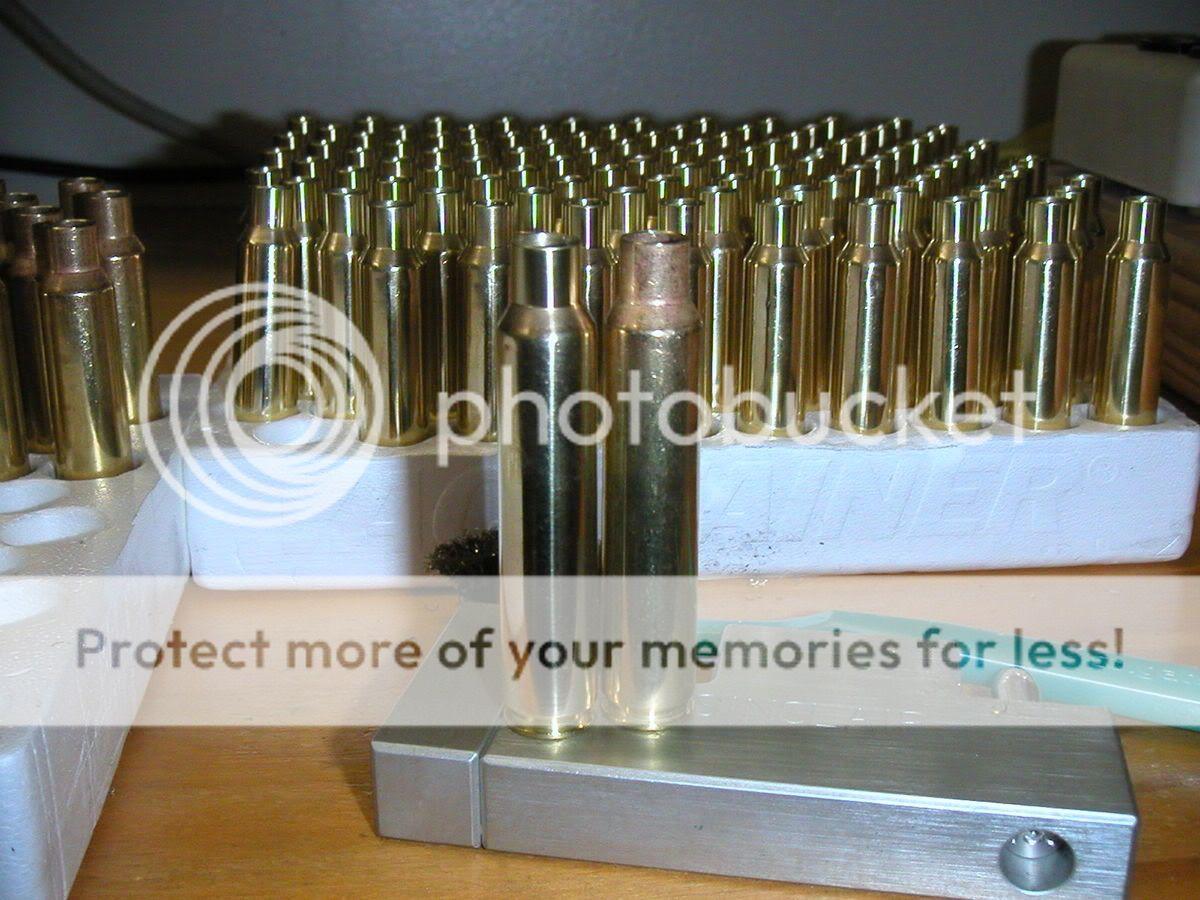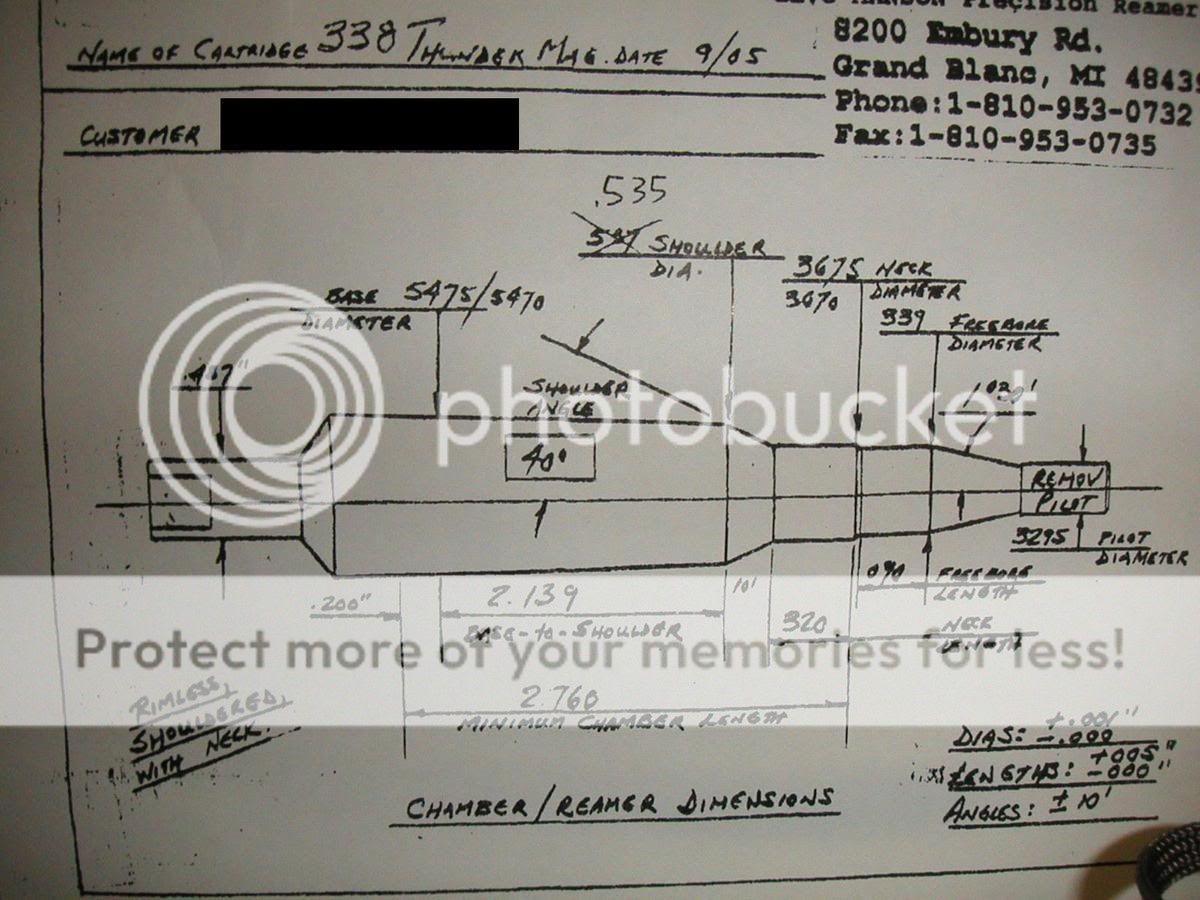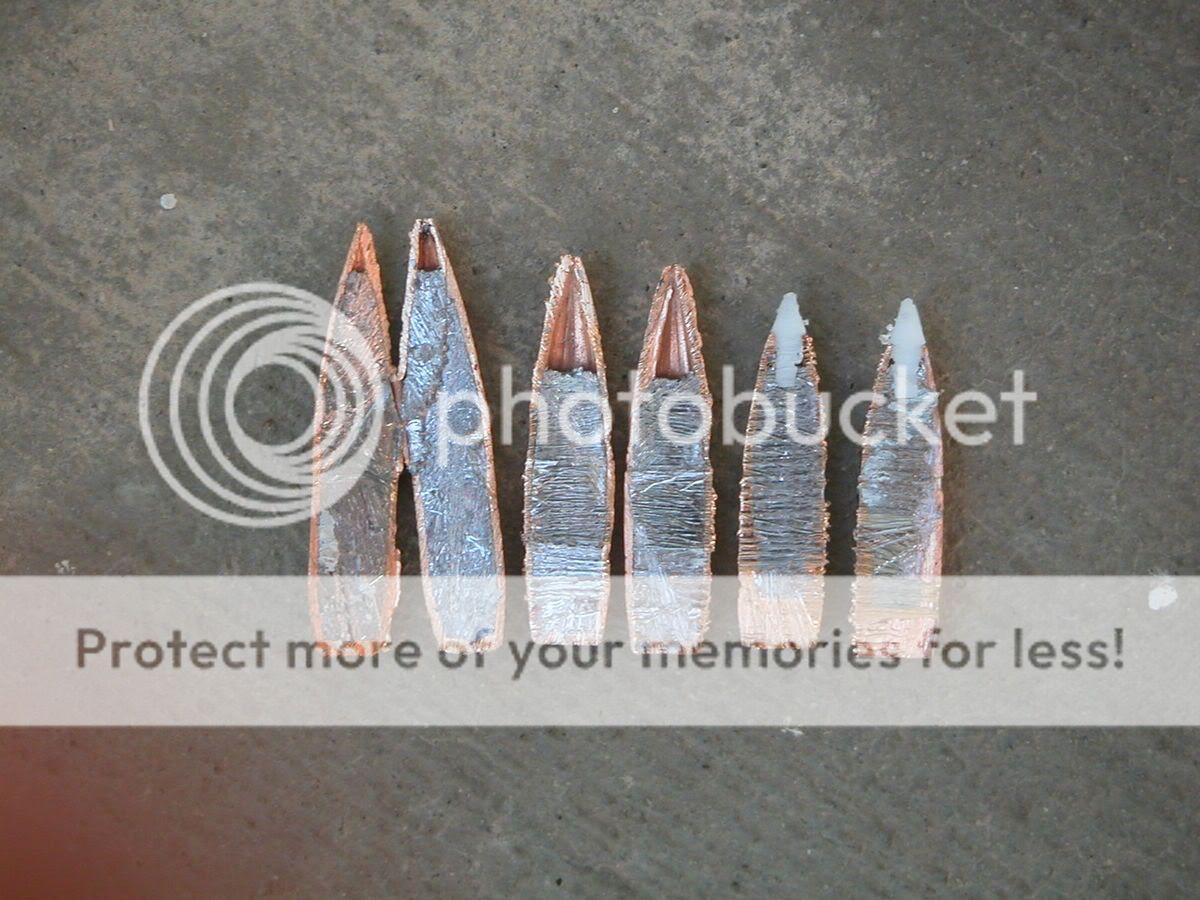Wow, I have been out practicing on the 12" gong at 1150 yards all morning and I come back and there are lots of posts to answer! Great, I will get started typing and hope to answer a few.
Shawn,
THank you for your q's. The main reasons why I didn't choose the 300 grain bullet for this project was because the case capacity is more optimum for the 225-250 weight class as the speed attainable wouldn't be sufficient or better in the time of flight department. I also will most likely be firing this gun from the prone position off bi-pods and the rifle will only weigh about 9 pounds and the recoil of the 300's are a concern. As you know, energy means nothing if you can't place the bullet properly because of a flinch. The third reason I didn't choose the 300 mk to start with was because if I need it, the 338 MOAG shoots these much faster than the thunder will and it can most certainly be utilized if need be. The fourth reason I didn't go with the MK's is because of my own inexperience with them on big game. I use them all the time for vermin, but I will need to test them before I would set up the reamer for them. I have not used the Scenars on game either, but if they fail my phone book tests, I can easily switch to the 225 accubonds because they are so similiarly shaped and I have plenty of personal close and long range big game data with those! I will surely try the 300 grain MK's on the gong with this rifle, but after measuring about a 1000 of them, I must be honest with you. All in all, the 250 Scenars absolutely put the MK's to shame as far as consistency. Of all the hundreds of bullets I have measured over the years, the 300 grain MK is hands down the worst for bearing surface consistency and meplat uniformity and the 250 Scenars are by far the best.
Good to hear about the bull! Sounds like he was dead before he hit the ground.
IF there are any more q's, please feel free to ask! /ubbthreads/images/graemlins/wink.gif
JB,
THat is a perfectly valid question and thanks for asking it. Part of your q can be answered with a little sentence that comes from my earlier post on this thread that a former member of ours unfortunately failed to read. Here it is:
[ QUOTE ]
I don't know if I will actually take a shot at 1 mile, but 1500 should be realistic at some point if the conditions permit!
[/ QUOTE ]
THe conditions will have to be perfect for me to attempt a 1 mile shot-and yes, I will do it from a bi-pod if need be but I would rather strap my varmint rest to my pack frame for a shot like that. The conditions I will need are as follows:
<font color="red"> Early early morning shot before the sun creates mirage. </font>
<font color="blue"> Dead calm conditions- not even a mouse fart can be felt.
</font> <font color="green"> Bedded down elk, or very docile elk that won't move during flight. </font>
<font color="brown"> A totally comfortable and resting heart beat condition on my part. Can't shoot that far if my lungs are going in and out like an accordion trying to play Van Halen's "eruption". </font>
<font color="blue"> And after all that, I will need to have the gut feeling that I can make the shot. If it just isn't my day, it will be a good day for the elk. </font>
The other part of your q can be answered here:
I didn't admonish Lerch about the bi-pod. In fact, if you look back at that thread, I told him I do see the reason behind what he was trying to do. I did however advise him to get a better bench. This is key in my opinion. Better groups come from better benches. Shooting prone off solid mother earth with a bipod would be better than shooting off a rickety bench- but a good bench is still more solid than prone shooting. If this was not so, you and I and the 1k br crowd would be shooting prone instead of off concrete benches. 7mmrhb's wonderful bench is as steady or steadier than a concrete bench in my opinion and I can shoot better groups off it consistently! That being said, I believe in practicing off bi-pods as well to increase one's ability afield.
As far as respecting p-dogs more than elk, I believe I have answered that already. I do not distinguish between the two. THey both deserve a quick kill regardless of who is bigger. AS Yoda says, "judge me by my size do you?"
That being said, a p-dog is definetly harder to hit than an elk as sewwhat89 said.
ANy more q's will be answered if you have them and sorry for the slow response time. /ubbthreads/images/graemlins/wink.gif
Sewwhat89,
Thank you for clearing that up. I have stirred two big pots since being on this forum and neither were my intention and I apologized to all the board users who had to see that crap. Blame it on my 26 year old strong spirit and my college debate classes! /ubbthreads/images/graemlins/shocked.gif /ubbthreads/images/graemlins/wink.gif That was one "A" that I wish would have been a "C" sometimes!
Buffalobob,
Thank you dearly for crunching those numbers for us. I will use them in my project calculation from here on out!
Lerch,
Please understand that I was not harping on you for using the bi-pod. I think that a grand slam earned off a bipod is a grand slam earned indeed.
A 35-55 pound rifle IS the ticket for 2000 yards IMO and it is almost impossible to shoot that kind of weight accurately from a bi-pod. So my suggestion is to start saving up for the proper equipment now so that when the rifle is done, you can start banging away. When the MOAG was first finished, we used the altered varmint rest for awhile and it was "not it" as Uncle B stated later. YOu can see photos of this first try in the original 338 moag pics thread. We had to build and design a much heavier rest with front and rear pedestals to get the strenght and fine adjustment needed for 2k shooting.
ANyway, hope I have been helpful and please fire off a few more q's if you would like and I will try to answer them more quickly next time.
Thanks. GG




